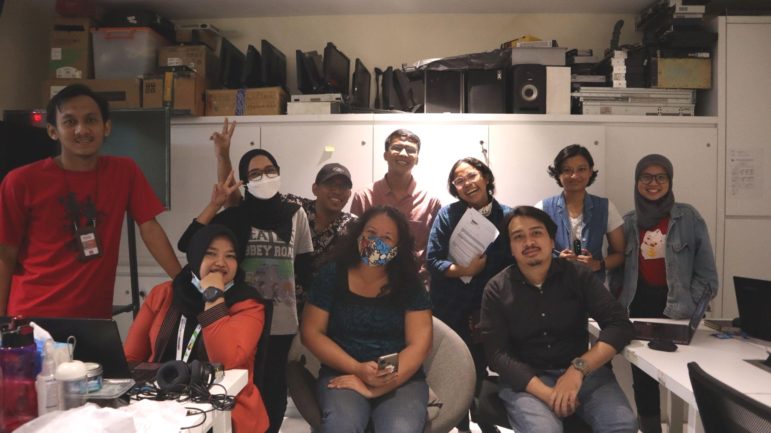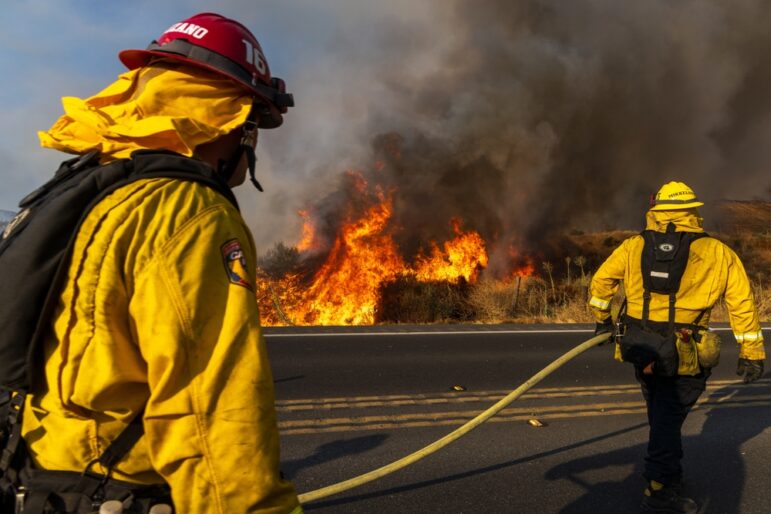

How Journalistic Teamwork Uncovered Years of Regulatory Failure in Texas
This post was originally published on the Society of Environmental Journalists (SEJ) website through SEJournal Online and is reprinted here with permission. Its authors, David Leffler and Savanna Strott, are reporters for Public Health Watch that conducted an investigation into what caused one of largest fires in Texas history.
“Everybody freaked out when ITC happened. We were all waiting for the other shoe to drop.”
Suddenly, environmental justice was at the forefront of local politics.
It was July 2022, and our investigation into the US Environmental Protection Agency’s reputed ineffectiveness in Texas — a state ravaged by petrochemical pollution — was in its infancy. At the time, our story’s direction was hazy at best. Everything changed after we heard those two sentences from a longtime employee at the EPA’s Region 6 office in Dallas.
“ITC” was Intercontinental Terminals Company, a storage facility for millions of barrels of volatile chemicals.
On March 17, 2019, a fire had consumed the Houston-area compound, shooting flames 150 feet into the air and sending out billows of ink-black smoke. The blaze burned for three days, spurring shelter-in-place warnings across the region and making headlines across the country.
ITC was one of the biggest chemical fires in Texas history — so big that it shifted the political priorities of Harris County, the third-most-populous county in the United States and the epicenter of North America’s petrochemical industry.
Following the disaster, county leaders allocated nearly $12 million to track and fight industrial pollution. Suddenly, environmental justice was at the forefront of local politics.
But how much did ITC matter three years later? A lot, our source told us.
Retired Regulators Provide Crucial Roadmap
That was the beginning of what became a two-part investigation into federal and state regulatory failure and previously unknown public health threats connected to the chemical fire.
Public Health Watch and its partner, The Texas Tribune, discovered that the EPA and Texas had ignored warning signs at ITC for nearly two decades prior to the 2019 catastrophe. After the fire was extinguished, dangerous levels of the carcinogen benzene infused nearby neighborhoods for weeks while residents unknowingly went about their daily lives.
Our investigation was built on the backs of a small group of retired regulators who tried to sound the alarm about ITC years ago and decided to speak up in hopes of preventing similar disasters.
Finding these regulators took dozens of calls to advocates, experts and government insiders. Earning their trust took dozens more.
Over the course of 10 months, these regulators took us into their world — one of hazardous chemicals, complex science, and labyrinthine air pollution rules.
They helped us understand the nuances and limitations of the EPA’s power, especially in places like Texas, where federal intervention is often akin to a declaration of war. They also explained the intricate pollution-tracking technologies and convoluted processes needed to pinpoint and analyze chemical leaks.
Smoke is visible from the storage facility fire in Deer Park, Houston. Image: Shutterstock
Most important, these regulators gave us a roadmap leading to thousands of pages of state and federal documents we wouldn’t have found otherwise.
With their help, we crafted Freedom of Information Act and state open-records requests that unearthed never-before-seen facility inspection reports and pollution data going back to 2002.
These documents exposed years of negligence by the Texas Commission on Environmental Quality, or TCEQ, and the EPA’s Region 6, which oversees federal environmental regulations in Texas and four other states.
Recurring Issues Ignored for Years
“Something bad was going to happen at ITC. It was just a matter of time.” — Ken Garing, former EPA chemical engineer
The documents were damning. Both agencies had inspected ITC several times. Both had identified significant problems, including recurring mechanical issues within the cluster of large, white chemical tanks that ultimately caught fire in 2019.
“I remember thinking, ‘Holy cow.’ They had by far the highest benzene numbers we’d ever seen inside a facility,” Ken Garing, a chemical engineer who spent 30 years with the EPA’s National Enforcement Investigations Center, told us. “Something bad was going to happen at ITC. It was just a matter of time.”
Neither agency took meaningful action against the facility, though there had been ample opportunity to do so.
From 2002 until the 2019 fire, ITC was penalized only $270,728 by the TCEQ, the EPA, and Harris County combined. That was barely a blip on the balance sheet for ITC’s owner, the Japan-based Mitsui Group, which recorded $7.2 billion in profits in 2018 alone.
These regulatory failures had flown under the radar for years, but the damage they helped inflict was extraordinary.
For three days, the ITC fire blanketed the Houston area with fine particulate matter, which can settle deep into lungs and wind up in bloodstreams. Chemicals lingered in the air for weeks in Houston suburbs including Deer Park, where ITC is located.
Cancer Concerns, Memories of Terror
It was one thing to sift through pages of EPA data showing that residents were exposed to startling levels of benzene following the ITC fire. It was another to find people to bring that experience to life.
Many Deer Park residents still aren’t aware of what they breathed in during the 2019 fire.
Deer Park isn’t your typical environmental justice community. It’s comfortably middle class and predominantly white. It’s a town of 30,000 whose neighborhoods feature clean streets, large yards, and spacious two-story homes.
The petrochemical industry, which has been intertwined with Deer Park for nearly 100 years, is the largest local employer and a major philanthropic supporter of civic activities. The industry has especially close ties to Deer Park’s highly-rated schools, which, along with well-paying industry jobs, are draws for families.
Those factors made Deer Park an intriguing place to profile. But they also presented challenges.
There are no local advocacy groups, and residents tend to have a pro-industry perspective. Noxious odors are often described as “the smell of money” — a saying long evoked by Texas politicians boasting about the petrochemical industry’s economic benefits.
We started going door-to-door in search of people to speak with about the fire. Many seemed surprised to see strangers on their doorsteps. That feeling sometimes shifted to discomfort or anger after they learned we were journalists. A few threatened to call the police.
But those experiences were outliers. The more we knocked, the more we were greeted with enthusiasm.
Families welcomed us into their homes and described to us the terror they’d experienced during the 2019 fire. Parents wondered if the school district had moved too quickly to open campuses once the flames were extinguished. Some children wondered if they’d someday be diagnosed with cancer because of the fumes they were forced to breathe.
Sharing these residents’ stories gave our project more heft and humanity. By pairing their accounts with hard data and shocking evidence of regulatory failure, we ensured that our project would be neither bogged down by scientific jargon nor larded with narrative fluff.
An Unfinished Story
Our aim, however, was accountability. As journalists, our responsibility isn’t just to tell a good story. It’s to give readers an outlet for their anger and anxiety: Who dropped the ball? What new laws need to be enacted? Which politicians need to step up?
At the direction of our editor, Susan White, we never write a story like this and think, “We’re done.” Follow-up pieces are critical to keeping readers engaged and holding people in power to account. To that end, we’ve written several stories about ITC since our two-part investigation came out in late April — an effort we’ll expand upon in the coming months.
Many Deer Park residents still aren’t aware of what they breathed in during the 2019 fire. And too little has been done to safeguard against the next catastrophe in the four years since ITC burned. The Texas Legislature has not taken substantive action to punish even the most egregious polluters. ITC is operating as usual and recently applied to renew its operating permit. The facility’s only pending Clean Air Act violations rest with Texas Attorney General Ken Paxton, who was recently impeached by the Texas Legislature for alleged bribery and abuse of public trust.
In short, there’s a lot more work to do.
Additional Resources
Investigating Environmental Crimes and Climate Change
Aggressive Reporting, Fierce Writing, and FOI Requests: How a Small Town Editor Won a Pulitzer
Investigating Toxic Military Bases and Their Links to Cancer
David Leffler is an investigative reporter for Public Health Watch covering chemical pollution and environmental health issues, based in Austin. He is a finalist for the 2023 Livingston Awards.
Savanna Strott is a contributing reporter for Public Health Watch, where she covers chemical pollution and environmental health issues. She is a finalist for the 2023 Livingston Awards.









